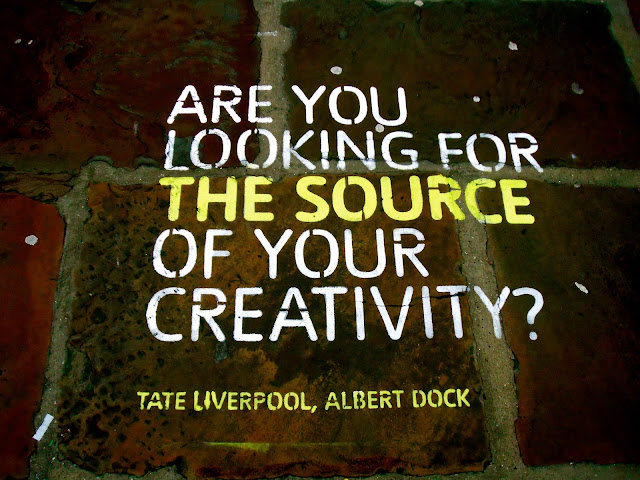Doug Aitken’s The Source is an inspiring, psychological exploration into the genesis of creativity, as well as the individualistic processes by which artists allow their ideas and thoughts to transform into creative manifestations. Located next to Tate Liverpool The Source is essentially a freestanding pavilion in which the public can enter and view six simultaneously running screens of acclaimed cultural figures discussing the formation of their creative ideas. Upon entering the pavilion I personally felt that I had passed into an obscure, psychological microcosm of the artistic mind - a plane outside of time and place - a sphere of ideas. If one stands in the centre of the pavilion they hear a discordant mixture of voices and opinions produced by the simultaneously played videos; the result of this sounds like a sort of psychological orchestra – the verbal thoughts and ideas, which are expressed concurrently are the instruments but they are somehow unsynchronised, and do not play the same composition. Ironically, this allegorical remark makes an uncanny reference to the piece’s emphasis on individualism. The different voices have individualistic views and you can literally hear their collective conflict in the unharmonious mixture of audio playing throughout the space. What Aitken reminds us is that individuality is central to how creativity is channeled. Thus, the source of creativity varies depending on idiosyncratic matters. However, I noticed that quite a few of the artists described their ideas and creative foundations as being chaotic and sometimes nonsensical; it was their role to shape or ‘sculpt’ as some put it, the chaos into something which passes as art. Musician Beck claims, in his interview with Aitken, that his songs are practically “shaped chaos”. Therefore, the idea of an artistic creation being an unlikely combination of disarray and sequence is inspired.
Even though I
really appreciated the concept of The Source and
how the artist becomes the central subject matter, naturally there were certain
aspects of the piece that I felt quite critical towards. First and foremost, I
would like to address the way in which the piece was executed. With several
videos playing simultaneously in the same space it was quite problematic I
believe; whilst trying to listen to one video, audio from others was hearable,
and this consequentially made it difficult to focus on one specific interview.
This aspect was unfortunately detrimental to my overall experience of the
piece, but if the videos had somehow been displayed in separate spaces, this
would not have been the case.
On the other
hand, I felt that the range of artists interviewed by Aitken were
predominantly, if not all, American or European. What about artists outside of
western culture? Wouldn’t it be interesting to see how artists outside of the
main art arena work? As a biennial piece I thought it was a shame that
Aitken did not include artists of a more diverse array of cultures and
backgrounds, as after all biennials are international manifestations of modern
art. Fundamentally, I felt the piece was predominantly a source of
inspiration and empowerment for other artists. I think that an aspiring artist,
musician or performer visiting the piece would be able to acquire a great deal
of inspiration and philosophical motivation for when they implement their own
work. However, I do not think this means that those without creative outputs
lose out on the experience, as they will surely learn from Aitken that there is
no real secret to creative genius - no distinct instructions to the acquisition
of it. Ultimately, individuality dictates where our personal source of
creativity is found whether it is internal or external to our being.


No comments:
Post a Comment